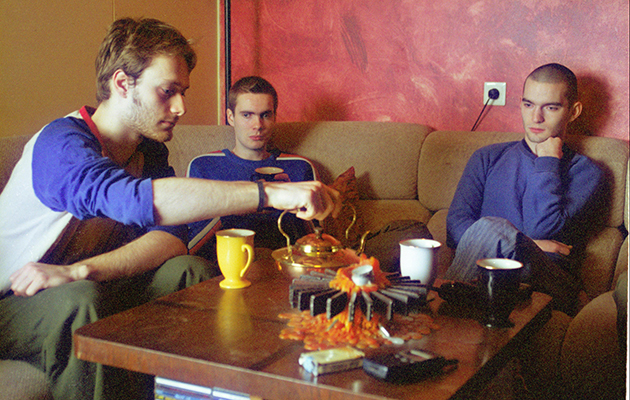Sigur Rós were only partly joking when they made a certain proclamation in 1999. “We do not intend to become superstars or millionaires,” the band posted on their website. “We are simply gonna change music forever, and the way people think about music. And don’t think we can’t do it, we will.” This may have been merely an act of youthful hubris, the lippy pretensions of a bunch of twentysomethings with nothing to lose. But it was also a measure of their brazen ambition and absolute surety in the music they’d been constructing over the past year. So much so that, when second album Ágætis Byrjun landed that summer, it seemed less like hyperbole and more like the fulfilment of a prophecy.
Ágætis Byrjun was as striking as it was unexpected. Formed in Reykjavik five years earlier, Sigur Rós had laboured over their debut LP, Von (translation: “Hope”). It finally saw light of day in 1997, following a painful two-year gestation, though the band still weren’t fully enamoured with the results. Issued on the local Bad Taste label set up by fellow Icelanders The Sugarcubes, Von pitched itself somewhere between shoegaze and ambient music. Sales were modest, to put it politely. It sold just over 300 copies at home.
Order the latest issue of Uncut online and have it sent to your home!
But Von did at least place down a marker. Lyrics to a new composition begun shortly afterwards detailed the band’s resolve: “We were all in agreement/We will do better next time/This is an alright start.” The song in question – “Ágætis Byrjun” (“A Good Beginning”) – would serve as notice of a renewed spirit, as well as providing a useful album title.
A key factor in the album’s expansive new vision was the recent addition of multi-instrumentalist Kjartan Sveinsson, whose prowess as an arranger allowed the band far greater harmonic scope. Alongside English producer Ken Thomas and the founding trio of singer/guitarist “Jonsi” Birgisson, bassist Georg Hólm and drummer Ágúst Ævar Gunnarsson, Sveinsson helped create a symphonic masterpiece that resided at the nexus of post-rock, ambient and classical music.
Ágætis Byrjun is more concerned with sound and texture than traditional song structure. Birgisson elects to play guitar with a cello bow (which quickly became a trademark), heightening the otherworldly effect of his androgynous falsetto vocals. As if to further advance the idea of music only tenuously linked to the present, he dispenses with his native tongue altogether at times, singing instead in a made-up language: “Hopelandic”. Birgisson would go on to sing the entirety of the album’s 2002 follow-up, (), in this acquired gibberish.
Nothing quite illustrates the preternatural power of Ágætis Byrjun like “Svefn-G-Englar”. Slowly unfurling over 10 minutes, it’s a stately procession that moves at a deliberate pace, dive-bombed at regular intervals by Birgisson’s eerie vocals and hurried into a faster gear somewhere in the middle, only to fall back into step. As the song recedes into the horizon, ambient-industrial noise melts into an accelerating heartbeat. Elsewhere, the palindromic strings of “Starálfur” are used to ravishing effect, punctuated by piano and a blast of distorted guitar that sounds like fireworks in an underground cave.
There are precious few concessions to traditional rock. When an organ and harmonica lead us into “Hjartað Hamast (Bamm Bamm Bamm)”, for instance, they feel oddly fraudulent, as if they’ve muscled their way into a private party. And while the discreet guitar line that motors the first half of “Olsen Olsen” is reminiscent of The Damned’s “Life Goes On”, the song’s choral harmonies and brassy orchestral flourishes sweep it along with a joyous sense of triumph.
Indeed, one of Ágætis Byrjun’s defining features is its unbound sense of optimism, the idea that pop music still had some way to go before surrendering its possibilities. As post-rock began to exert a greater influence with the oncoming millennium, Sigur Rós certainly appeared brighter and more hopeful than peers like Mogwai or Godspeed You! Black Emperor.
The band’s label was dreaming of sales of around 1,500. Instead, picked up by FatCat in Britain and PIAS in the States, Ágætis Byrjun became an international hit, shifting half a million copies and prompting a tour slot with admirers Radiohead. And for good reason. Twenty years on, it still sounds like a communiqué from a parallel dimension.
Extras: Depending on your choice of format, this comes as either a 4CD set, a double-vinyl package or a 7LP deluxe box with 84-page hardback book. Alongside the original album, there’s a live recording from the Icelandic Opera House in June 1999, plus album demos and rarities.



